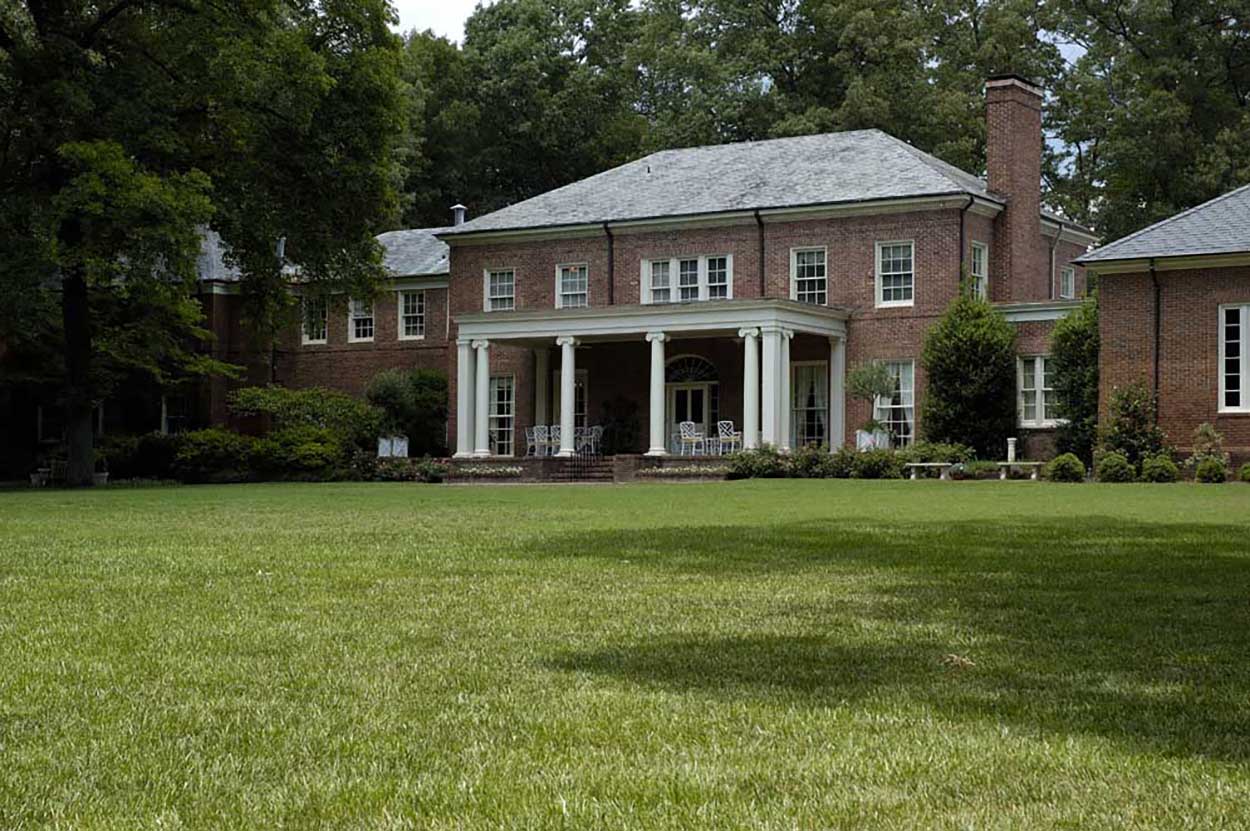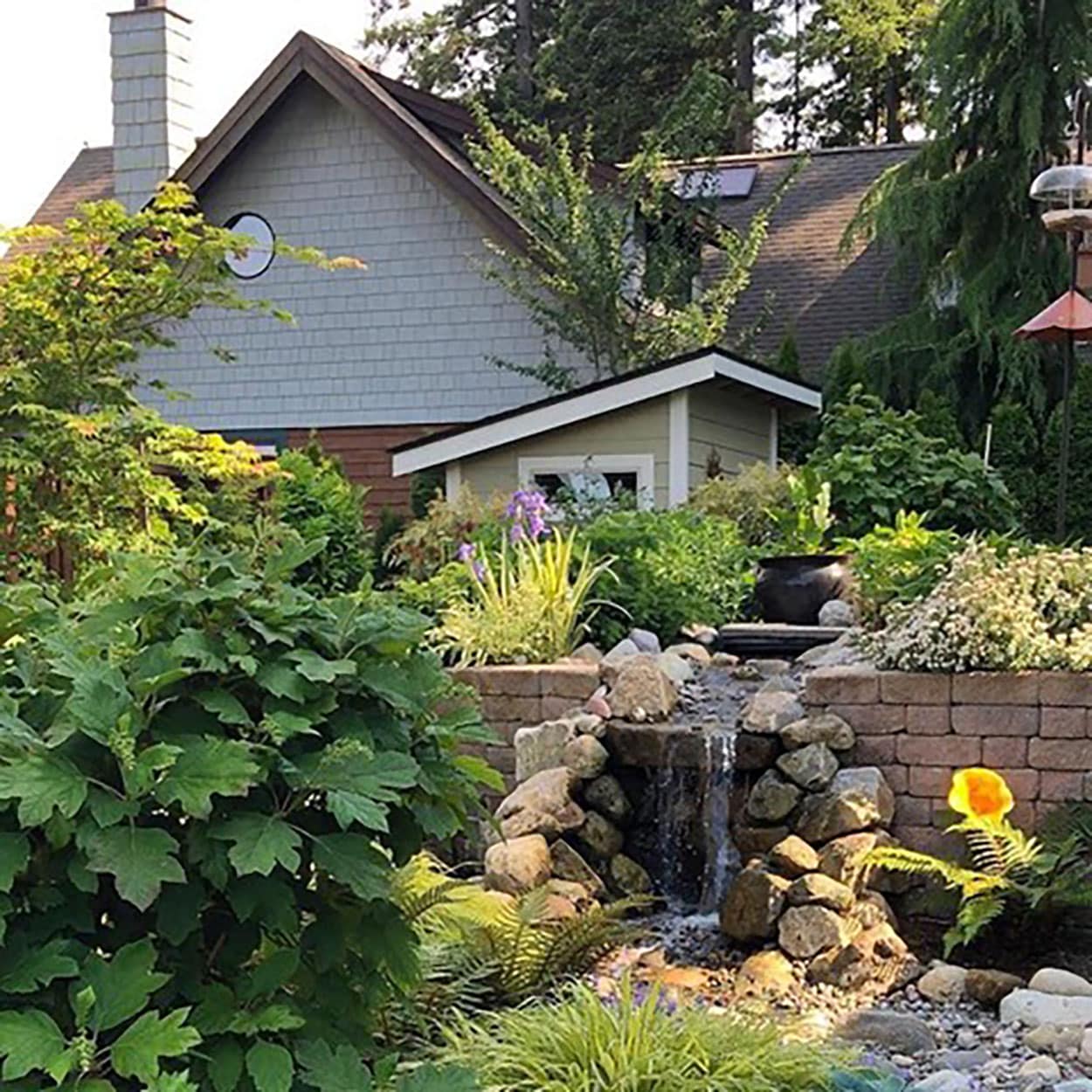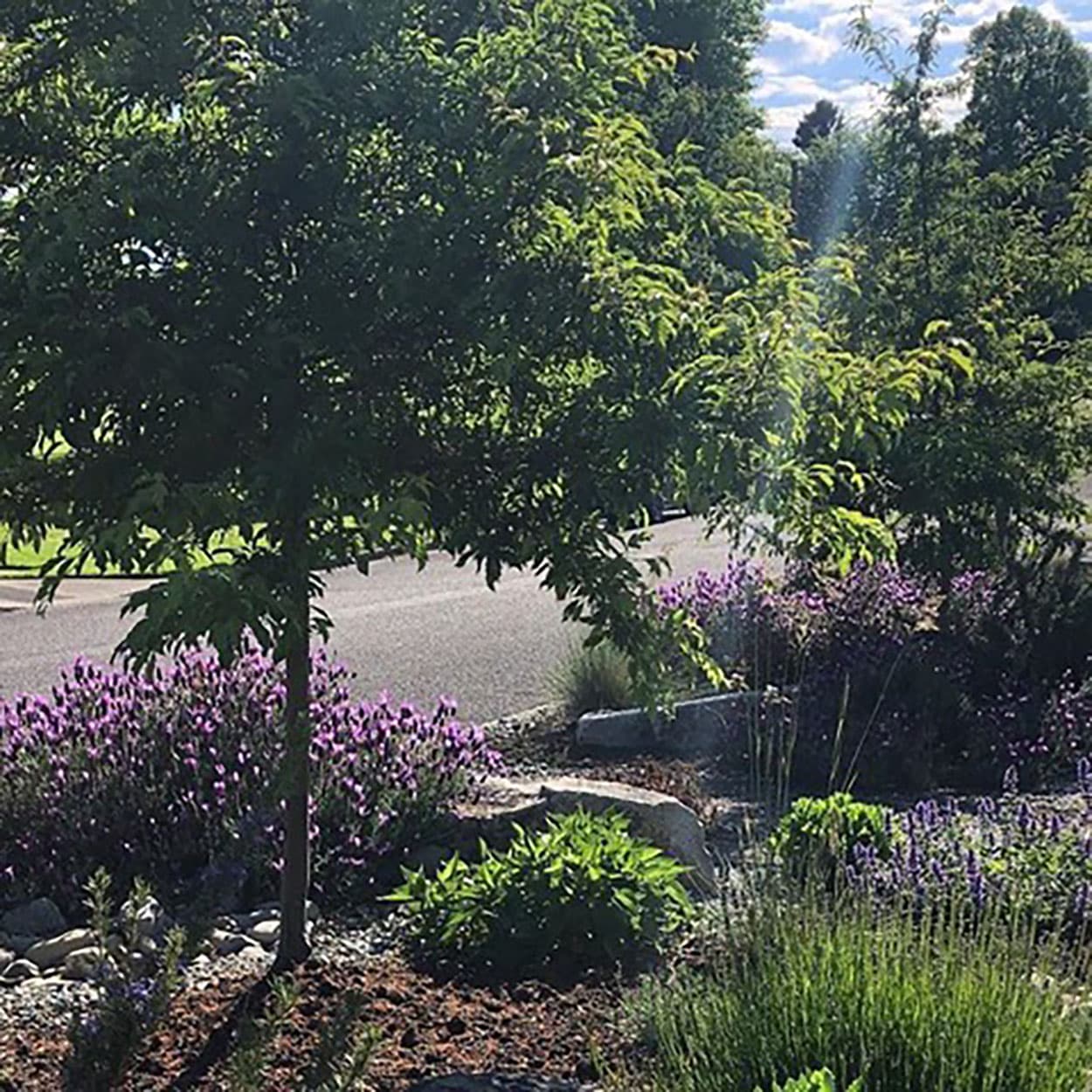Community Education Environment
Jennifer Chushcoff: Hidden deserts in our midst
If you spend more time maintaining your lawn than enjoying it, it’s time to consider your alternatives. Removing a lawn, or at least a portion, is good for the planet and for you.
Looking out the window, those lush lawns seem pretty harmless. That’s only because a glance doesn’t reveal the truth.
A lawn is a desert
A lawn is a desert, a no-man’s land. There’s nothing to encourage pollinators. No support for native habitats. Nothing. They just take and take. And what they give back, we don’t want.
Every time it rains, fertilizers and pesticides used to maintain them leach into the soil. These chemicals find their way into the water system and create toxic conditions that negatively impact our environment, which includes our bodies.
Consider lawns’ predilections:
- Gas-powered machines and their fuel, both producing noise and air pollution. That is, unless you enjoy the sound of leaf blowers.
- Massive water requirements in the midst of increasing droughts and wildfires.
- Annual applications of harmful fertilizers and pesticides.
- Weeding; edging; mowing; dethatching; seeding; topdressing . . .
- Demanding sun to the point that healthy trees are cut down to appease it.
Lawns are costly because they are unnatural. They require a tremendous amount of upkeep, demanding time and money like a green-fiend bully.
Not worth the obsession
As an added bonus, spending this much on a project encourages … obsession. Vigilance. Anxiety. A death spiral of woe. You now get to obsess over the moss that stubbornly wants to live. Or zero-in on the wrong kind of grass that set up camp. Or fret over the dead brown spot located conveniently smack dab in the middle of your perfect patch.
If any single plant in my yard required this much attention — while contributing nothing more than some sort of ephemeral neighborhood status — It. Would. Be. GONE.
So, what is it that lawns give us in return? Surely, with all this work, families are enjoying each free moment by frolicking about in those luscious blades, picnicking with neighbors and running barefoot like summer’s children. Right? Right . . .

Immaculate green lawns are expensive to maintain and bad for the environment.
A brief history of lawns
At this point, you may be wondering how the ubiquitous lawn came about in the first place. Lawns, or open stretches of meadow called laundes, were originally used as “surveillance systems” for medieval French and British castles. They allowed guards to see anyone approaching from the surrounding woods.
During the 17th century they gained popularity with wealthy landowners who used them to signal status. Only the very rich had the means to hire labor to maintain their sprawling, private estates.
Today, lawns are mostly a “plug and play” solution for home builders who drop in sod for new housing developments, because it’s cheap and easy. For them. Not for you.
For you, lawns are a spendy business. For the contractor, lawns are a simple, quick solution for the bare, compacted earth left after construction.
A $2,000-a-year lawn?
When was the last time you looked around at the green-flanked streets and asked, “Why? Why are we still doing this?”
Besides their environmental toll, the monetary costs of lawn care are probably more than you bargained for. On average, maintaining a small plot of green will cost around $1,560 to $2,340 a year. And if your yard is overgrown, companies may charge a “long grass fee,” which can range from 50% to 100% more.
But, what are my alternatives, you ask? There are many. Replace lawns with:
- Drought-tolerant plants
- Native plants, which are often drought-tolerant
- Alternative ground covers that don’t grow high or need to be trimmed
- Container gardens
- Raised garden beds for edibles (herbs consume less water/vegetable gardens consume more water seasonally)
- Hardscaping: fire pits, pea gravel paths, rock gardens, Japanese Zen gardens, bocce ball
- A combination of all!
As you being exploring your many exciting options, keep this phrase in mind: “Right Plant. Right Place.”
In my years working as a Master Gardener, that aphorism was driven into me. It’s a simple concept, but not always easy to follow. It means to place plants with the same water and sun requirements together and to leave enough space between new plantings for them to grow full size. This last one is hard because new gardens always looks so bare and it’s tempting to make up for that by overplanting.
Consult a landscape designer
A quick internet search will get you inspired and on your way. But if it all feels too overwhelming, consult with a local designer that specializes in transforming boring, thirsty lawns into rich and lovely landscapes.
Garden writer, speaker and designer Sue Goetz has a knack for tackling these troublesome patches. Even those ugly and ubiquitous parking strips, AKA “hell strips”, are reborn under her green thumbs.
Years ago, I had the opportunity to work with her on a project where we transformed my awkward side yard and backyard into small individual “courtyards.” Small paths and a river rock “creek” nestled along water-wise trees and plants with gorgeous foliage like; Japanese lace-leaf maples (I have an addiction), oakleaf hydrangea, hostas, and ornamental grasses, with room for the occasional needy flowers, like peonies and dahlias.
Once you swap out a lawn for flowering plants and grasses, you support pollinators like bees and butterflies, which are necessary for our food. With each lawn removed, less chemicals enter streams, water is spared and beneficial insects return. All of which act in concert, creating a healthy ecosystem that supports plants, animals and us.

An example by Sue Goetz of how a lawn space can be transformed into something both easier to maintain and more friendly to the environment.
Saving 51,000 gallons of water
With temperatures rising and droughts increasing, even more money will be spent maintaining thirsty landscapes. Replacing a 1,500-square-foot lawn with water-wise plants can save a single household 51,000 gallons of water a year.
Get ahead of the curve and kick overbearing lawns to the curb by swapping them for raised beds with a drip system, drought tolerant plants or xeriscaping, which simply means a landscape that requires little to no additional irrigation. As more and more climate refugees arrive here from desert states, we’ll have a template for sustainable gardening to share.
Some forward-thinking individual will be the first in your neighborhood to enjoy a dynamic low maintenance, drought-tolerant and pollinator-friendly landscape. Whoever they are, “The Joneses” will be sure to follow. And that’s a good thing.
If you’d like to learn more read the National Wildlife Federation’s, “Farewell to Lawns.”
Jennifer Preston Chushcoff of Gig Harbor is a writer, designer, former Master Gardener and self-described “eco-advocate.”

An example by Sue Goetz of how a lawn space can be transformed into something both easier to maintain and more friendly to the environment.
